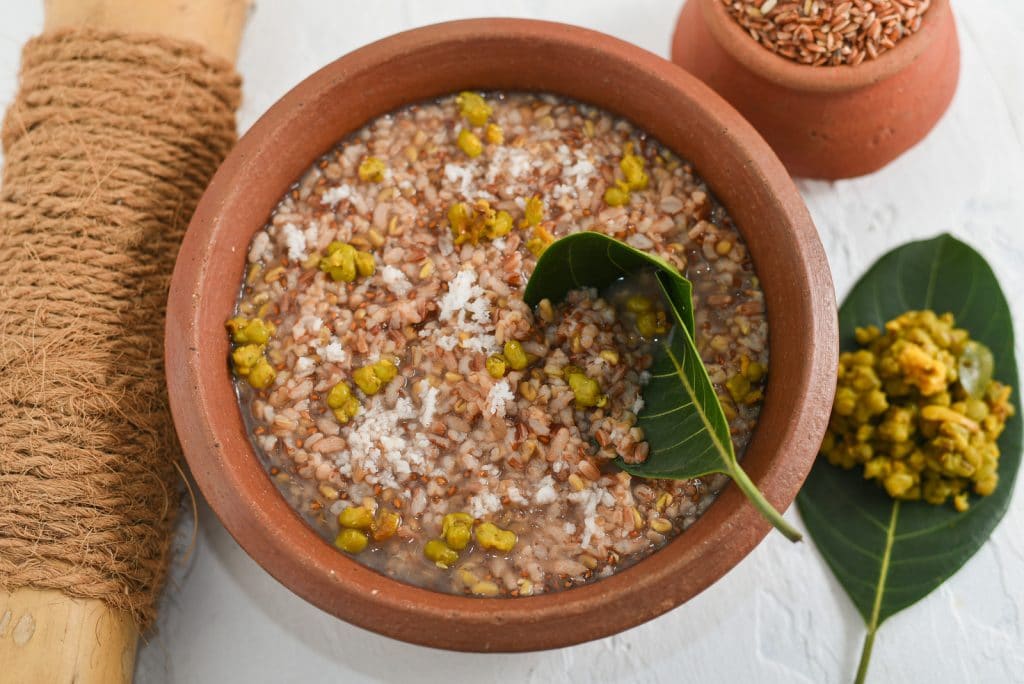[Article updated on 19/09/2023]
It was following my trip to India 3 years ago, the culinary discoveries, the 5 senses in excitement during this incredible stay that I discovered the Ayurvedic art of living, directly imported from this magnificent country.
What is Ayurveda? The literal translation is “science of vitality”. It is a medicine originating from northern India, dating back more than 5000 years ago. This form of medicine is now recognized by the WHO (World Health Organization) and know that it would give us the keys to optimal health!
An Indian proverb says “ if the diet is healthy, there is no need for medication, if the diet remains unhealthy, we are wasting our doctor’s time “.
What if Ayurveda was the solution to shine brightly?
Let’s take a closer look…!
Ayurvedic food and cooking: what is it?
It is a cuisine rich in flavors, smells, very colorful and nutritionally interesting (vitamins and minerals in large quantities: we love it!) based on the 6 flavors: sweet, salty, spicy, bitter, astringent (= harsh) and acid.
A good combination of foods will increase your vital force (Ojas) and it will also facilitate the elimination of waste and residues from the body (Ama). Sweet foods, for example, tone and purify the body, while salty foods soften and energize the tissues. According to Ayurveda, a meal must include at least three of the six flavors for the diet to be healthy and balanced. It is important to know your Ayurvedic constitution well and to choose the tastes most in accordance with your dominant dosha (there are 3 which are Vata, Pitta or Kapha: go on the internet to do a test to find out what energetic strength of nature you match)!
The balance of the 6 flavors of the Ayurvedic diet:
- Sweet: cinnamon, honey, sugar, rice, beets, carrots, fruits, etc. => gives stability to the body
- Salty: sea salt, seaweed, foods with added salt, etc. => facilitates absorption
- Spicy: onion, mustard seeds, ginger, pepper, radish, etc. => detoxification of the body
- Bitter: coriander, cumin, nettle, etc. => helps with bile secretion and facilitates the work of the liver
- The astringent: turmeric, seaweed, eggplant, soy, unripe banana… => firms the tissues
- Acid: lemon, pineapple, yogurt, tomato, grapefruit, spinach, etc. => flavor enhancer
The Ayurvedic diet recommends doing without meat, fish and sometimes even eggs, which makes the dishes vegetarian. Yogurts and cheeses are used in the preparations.
We also find in Ayurvedic recipes many spices and aromatic herbs which, for some, will have a beneficial effect on your digestion, will give flavor to your dishes, allowing you to reduce the salt added to your preparations (and thus prevent cardiovascular diseases). A double interest!
Your senses will therefore be alert, exhilarated and you can only eat in full awareness, tasting, taking the time to savor.

The dietitian’s eye to see more clearly
There are golden rules of the Ayurvedic diet (which you can find on the site: www.ayurveda-france.org) which push the curious who wish to test this method to eat in peace, take the time to chew the food, vary the dishes eaten each day,… Rules which, even if they are a little restrictive, can have, for some, real beneficial effects in the restricted eater: the one who deprives himself and who keeps yoyoing with his weight!
However, remain critical and do not blindly follow rules whose author you do not know or whose seriousness is doubtful.
From a nutritional point of view, the Ayurvedic diet seems to be an interesting alternative for people consuming too much protein or for others who do not use enough vegetables, legumes, spices and herbs in their preparations.
Rich in fiber, vitamins, minerals and vegetable proteins, Ayurvedic cuisine is recommended as part of a dietary rebalancing, encouraging you to move in the direction of change and discover new habits.
Ayurvedic cuisine will allow you to discover new flavors, break away from your eating habits (preventing you from relying on 4/5 mastered recipes) and make your meals exotic.
The Ayurvedic diet is not a restrictive diet but an art of living, so it will not lock you into a diet that chases away kilos! Phew!
It is indeed a healthy, balanced cuisine based on listening to food sensations: taking the time to eat, chew, calmly, savoring the flavors of the dish. It encourages you not to eat based on your emotions (stress, boredom, anger, etc.) but rather based on your feelings of hunger or satiety.
Dietitian’s advice: to maintain a stable weight, vary your menus, try to set yourself culinary challenges, discover never-before-tested flavors, stroll through exotic grocery stores, you will not be disappointed!
Ayurvedic cuisine – recipe ideas
“Boost” drink for 1 person:
- 1/2 banana
- 1 orange
- 1 kiwi
- 1 tablespoon of brewer’s yeast flakes
- 1 teaspoon of flaked wheat germ
Mix all the ingredients together.
Drink rich in vitamin C and B as well as potassium.
Soup good for your liver, for 6 people:
- 4 broccoli
- 2 zucchini
- 1 onion
- 2 cloves of garlic, chopped
- 4 tablespoons of olive oil
- 1 teaspoon of mustard seeds
- 20 mint leaves
- 1 teaspoon of salt
- Pepper
- 1 brick of soy cream
Cut the vegetables into pieces (dice). Cook them in a casserole dish containing a base of oil where you have previously heated the mustard seeds, the mint, then the onion and garlic.
Pour boiling water halfway up the vegetables, cover, cook over low heat for 25 minutes.
At the end of cooking, add the soy cream.
Soup rich in fiber, vitamins C, K, B9 and provitamin A.
